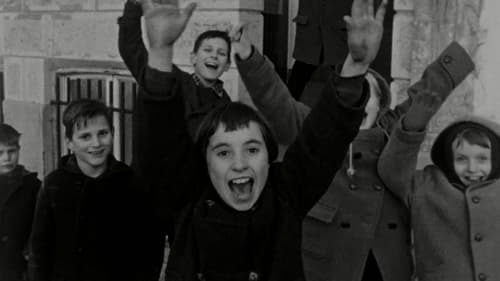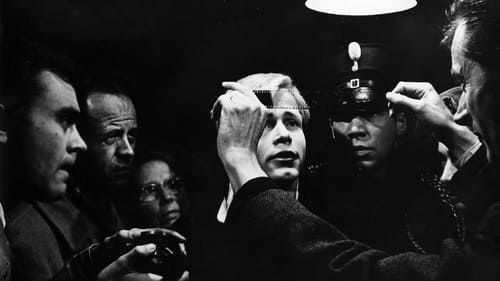
Ed van der Elsken
출생 : 1925-03-09,
사망 : 1998-12-28
약력
Ed van der Elsken (1925-1990) - the enfant terrible of Dutch photography - was a talented photographer and filmmaker who expressed his meetings with people in photos, photo books and films for more than 40 years. Strolling through cities such as Paris, Tokyo, Hong Kong and Amsterdam or travelling through Africa and Japan, he preferably took photographs of striking individuals with character. His first photo book Love on the left bank was published in 1956 and instantly made him world-famous.
Some twenty photo books followed. He also made several television films, mostly about subjects regarding his own life. Ed van der Elsken was born in Amsterdam in 1925. He lives and works in Paris from 1950 to 1954. In this period, he lives with Ata Kando and her 3 children. He moves back to Amsterdam and lives there from 1954 to 1971. He travels a lot for his work, for instance to Bagara, Central Africa in 1957, and makes a long world trip in 1959 and 1960 with Gerda van der Veen, his second wife.
Shortly after, their children Tinelou and Daan are born. During his many travels, Ed van der Elsken makes reports in colour for the monthly magazine Avenue.
From 1971, he lives in the countryside near Edam. In this period, he often travels to Japan and also works in Amsterdam. He is living with Anneke Hilhorst and they have a son named John. In 1988 he is diagnosed with cancer. He dies in 1990.

Director
Poverty, Demolition and Waterlooplein 1962/1964

Director
An entire summer, van der Elsken walked through Amsterdam an filmed in the same manner as he used to shoot his photos, strolling through the city centre and making contact with people that fascinated him. It became hís portrait of the city and its inhabitants.

Himself
A filmic portrait of the Australian visual artist Vali Myers, whom Dutch photographer and filmmaker Ed van der Elksen got to know in post-war Paris. With Myers, Van der Elsken shot his photo story LOVE ON THE LEFT BANK.

Director
A filmic portrait of the Australian visual artist Vali Myers, whom Dutch photographer and filmmaker Ed van der Elksen got to know in post-war Paris. With Myers, Van der Elsken shot his photo story LOVE ON THE LEFT BANK.

Director

Director
Report of the last market day on the old Waterlooplein in Amsterdam. Traders and visitors are interviewed and van der Elsken provides the commentary to the events.

BEPPIE is a moving and disarming portrait of an Amsterdam street urchin. Van der Keuken once described her as follows: 'She was ten years old and the joy of the Achtergracht, where I was living at the time. An Amsterdam child, sweet and crooked as a corkscrew.' He films her while she skims the city with some friends and knocks at strangers' doors. Her family has nine children and is not well off. In those days, a visit to the De Miranda swimming pool cost a quarter, but only ten cents if the weather was bad. At school, Beppie gets a poor mark because she is too boisterous, but when the whole class rattles off the multiplication tables, she joins in at the top of her voice. All of TV-watching Holland was wildly enthusiastic about this portrait, with which Van der Keuken even made the front page of the national newspaper De Telegraaf.

Writer

Director

Still Photographer
The fainthearted cigar trader Ducker keeps himself quiet during World War II. That changes when parachutist Dorbeck lands in his backyard. It turns out the parachutist bears a remarkable resemblance to Ducker. Ducker follows Dorbeck blindly, becomes involved in the Dutch resistance and soon starts killing people. When he escapes through German lines to the freed South Netherlands, no one has ever heard of Dorbeck.

Director
An impression of schoolkids in Amsterdam: in the canal boat, in Artis Zoo at the monkeys and swimming in the canal.

Cinematography
While Jan Vrijman was shooting DE WERKELIJKHEID VAN KAREL APPEL in 1961, Ed van der Elsken made the short film KAREL APPEL, COMPONIST. Appel wanted to compose the soundtrack for Vrijman‘s film, so with the help of the electronic sound studio of Utrecht University, he went for two weeks to record Musique Barbare. Van der Elsken, who did stills for Vrijman’s film, also took pictures in the sound studio, and had a tape recorder running. On the final day, he shot a few rolls of film with his 16 mm camera. Subsequently, as an accompaniment to Appel’s anti-music, Van der Elsken collected together photos, footage and sequences from an earlier film of Appel in his New York studio, and compiled KAREL APPEL, COMPONIST, a five-minute film in the spirit of the CoBrA movement. (IDFA)

Director
While Jan Vrijman was shooting DE WERKELIJKHEID VAN KAREL APPEL in 1961, Ed van der Elsken made the short film KAREL APPEL, COMPONIST. Appel wanted to compose the soundtrack for Vrijman‘s film, so with the help of the electronic sound studio of Utrecht University, he went for two weeks to record Musique Barbare. Van der Elsken, who did stills for Vrijman’s film, also took pictures in the sound studio, and had a tape recorder running. On the final day, he shot a few rolls of film with his 16 mm camera. Subsequently, as an accompaniment to Appel’s anti-music, Van der Elsken collected together photos, footage and sequences from an earlier film of Appel in his New York studio, and compiled KAREL APPEL, COMPONIST, a five-minute film in the spirit of the CoBrA movement. (IDFA)

Writer
Handen {Hands} is an experimental documentary film by Dutch photographer et filmmaker Ed van der Elsken. the film is a moving et poetic observation of how hands play an integral part in human life, from birth to death.

Director
Handen {Hands} is an experimental documentary film by Dutch photographer et filmmaker Ed van der Elsken. the film is a moving et poetic observation of how hands play an integral part in human life, from birth to death.



